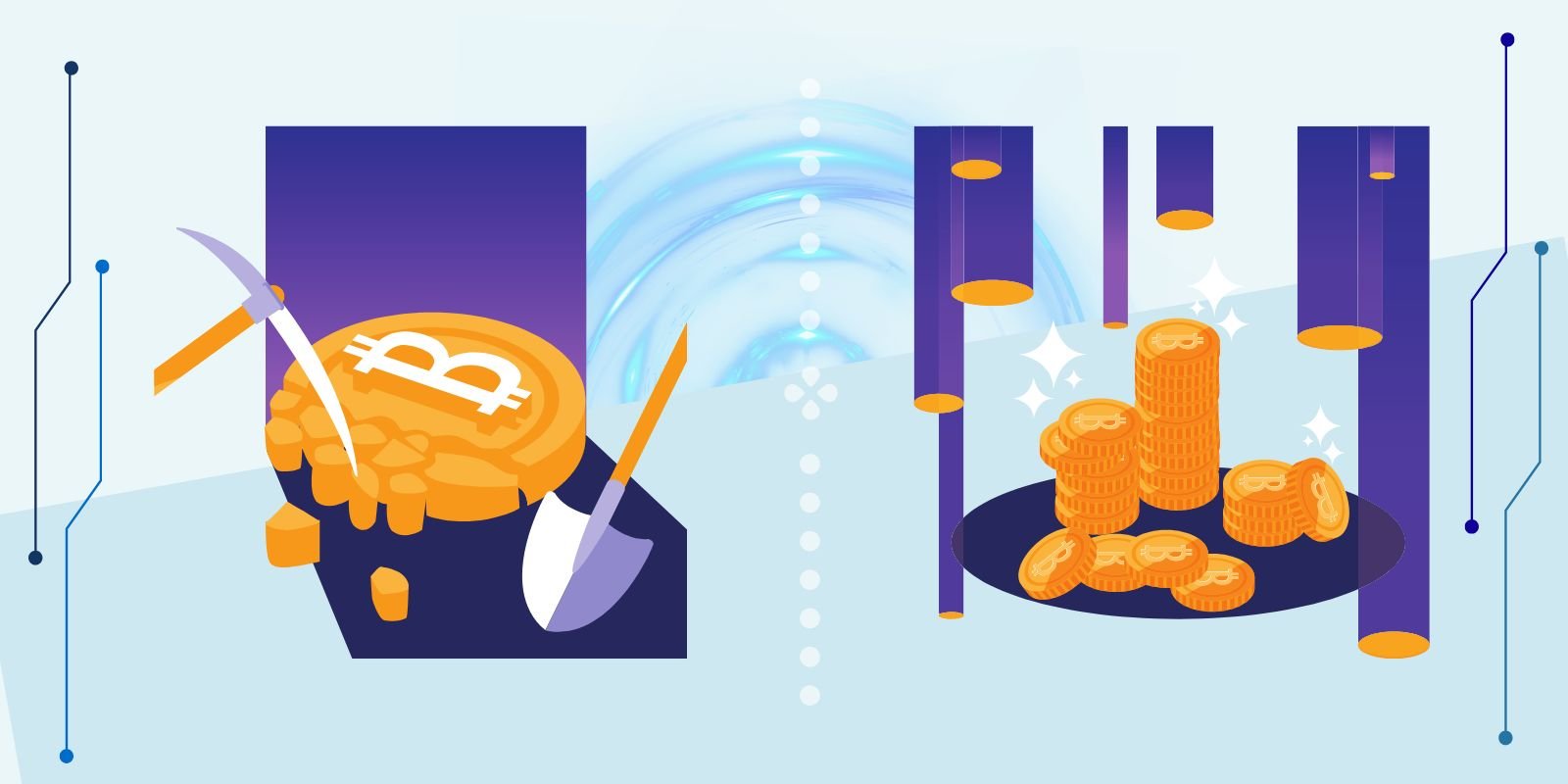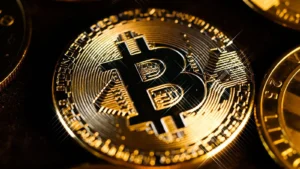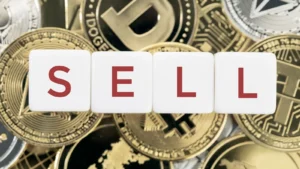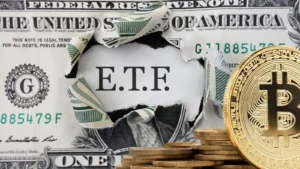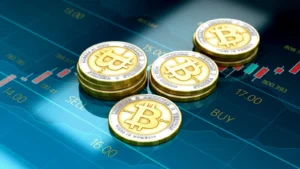Crypto mining vs Crypto minting are two common terms that are often used interchangeably. While both processes involve acquiring cryptocurrencies, they differ in their approach, level of complexity, and the rewards they offer.
Cryptocurrency is a complex topic with a lot of jargon—which can make it difficult to understand the finer details. To help simplify things, we’ve put together this quick guide to help demystify the differences between mining and minting when it comes to cryptocurrency.
What Is Crypto Mining?
Cryptocurrency is a digital or virtual currency that uses cryptography to secure and verify transactions and to control the creation of new units. Cryptocurrencies operate independently of a central bank and use a decentralized system for transactions, making them highly resistant to government interference or manipulation.
Cryptocurrencies are often viewed as an investment opportunity, similar to stocks or real estate. Many people believe that cryptocurrencies have the potential for long-term growth, one of the main reasons people buy and sell cryptocurrency in Dubai and all around the globe.
But how is cryptocurrency produced?
Let’s start with the basics. Crypto mining is the process of using computers or specialized hardware to help verify and secure cryptocurrency transactions, and in return, be rewarded with cryptocurrency. It involves solving complex mathematical problems—this process helps support the network and prevents bad actors from launching certain kinds of attacks.
In other words, crypto miners help to ensure that transactions are valid and confirmed so that users can trust their transactions. Specialized hardware and powerful computers are usually required to conduct crypto mining operations; it’s far more energy-intensive than crypto minting.
So how do crypto miners get paid? They receive a reward in form of cryptocurrency for every block they successfully mine. As more blocks are added to the chain, miners not only get a reward but also earn transaction fees associated with each transaction in the block. This means as long as there is transaction activity within the blockchain network, miners get rewarded for their work—including both the reward and any applicable fees.
What Is Crypto Minting?
Let’s start with the basics: crypto minting is a way to generate cryptocurrency tokens. Unlike crypto mining, which requires powerful computers to solve complex puzzles to validate transactions, crypto minting is a simpler process that only requires you to stake your existing crypto coins to generate new tokens.
The process of minting is quite straightforward. All you need is an internet connection and some coins that you can stake. You then use these coins as “collateral” for the new tokens. By doing this, you are creating an agreement between yourself and the network that those coins can be used as “proof” of ownership.
Once you have created your agreement, the new tokens will be generated automatically and sent to your wallet address for safekeeping. The key thing to remember about minting is that it does not consume any energy or resources beyond what would be necessary for a normal transaction—instead, the energy used comes from the staked coins themselves, making it an efficient and cost-effective way to generate new cryptocurrency tokens.
Crypto Mining vs Crypto Minting: Differences
When it comes to crypto-assets, you may have heard of both crypto-mining and crypto-minting. But what’s the difference between the two?
Crypto-mining and crypto-minting have different purposes, processes, and incentives.
Purpose
The purpose of crypto-mining is to produce or “mine” new coins from a given cryptocurrency network. On the other hand, the purpose of crypto-minting is to create digital tokens that can represent an asset like equity in a company or an item with inherent value, such as a rare item or artwork.
Process
Crypto-mining involves verifying transactions on a distributed ledger through consensus mechanisms. The miner then receives rewards for helping to validate the blockchain. On the other hand, with crypto-minting, tokens are usually created manually by a centralized authority depending on its specific needs. These tokens may be used for various purposes including tokenized assets, private identities, or complex contracts.
Incentive
The incentive for miners is cryptocurrency rewards while minting does not involve any rewards; instead, it allows users to generate tokens using their infrastructure or a white-label solution provider.
Consensus Mechanism
The consensus mechanism used in mining is typically proof of work (PoW) whereas for minting there is no consensus mechanism as it does not involve any verification of transactions; rather it serves as a platform from where digital assets can be created and exchanged.
Benefits of Mining and Minting Cryptocurrencies
When it comes to crypto mining and minting, both have their benefits. But what are some of the key advantages that may make you lean towards one or the other when it comes to investing in cryptocurrencies?
Benefits of Mining Cryptocurrencies
When you mine cryptocurrencies, there are several potential benefits you can enjoy:
- You get a chance to earn rewards for providing processing power and validating data.
- You get to be part of a community, as miners usually join cryptocurrency-focused gatherings or forums to gain insights and knowledge from other miners.
- Mining is cost-effective, as you only need a computer, the right software, and an internet connection to start mining.
- You don’t need a lot of upfront capital investment to start mining cryptocurrencies.
- Mining also allows you to become part of the blockchain network, which means that you can vote on certain decisions related to a coin’s development or future improvements (depending on the cryptocurrency).
Benefits of Minting Cryptocurrencies
Minting also has its advantages:
- Minting is less labor intensive than mining since all you have to do is hold coins in your wallet or on an exchange that supports staking pools and wait for rewards in return for locking up funds for a certain period.
- There is much less technical work involved compared to mining since all you need is a compatible wallet or an exchange platform with staking pools offering good returns on investment (ROI).
- You won’t need to worry about your electricity bill since minting does not require any
What Are the Risks and Drawbacks of Mining and Minting Cryptocurrencies?
When it comes to mining and minting cryptocurrencies, there are some risks and drawbacks that you should know about. Let’s take a look at both.
Mining
Mining can be quite risky for the average person as it requires specialized hardware, software, and technical knowledge. Even then, you compete with thousands of other miners to win the reward. As such, the return on investment from mining may not justify the time and effort spent on this venture.
- High energy consumption: Mining cryptocurrencies requires a significant amount of computational power, which in turn requires a large amount of electricity. This can lead to high energy consumption and a significant carbon footprint.
- Expensive hardware: To mine cryptocurrencies effectively, miners require expensive hardware, such as ASICs (Application-Specific Integrated Circuits) and GPUs (Graphics Processing Units). This can be a barrier to entry for small-scale miners, further exacerbating the centralization problem.
- Environmental impact: As mentioned earlier, the high energy consumption of mining cryptocurrencies can have a significant environmental impact. This is a growing concern as the popularity of cryptocurrencies continues to increase.
Minting
Minting is also risky because you need to trust the developer of the cryptocurrency project, who will be in charge of creating new coins – and who could possibly manipulate the supply or price of coins if they chose to do so. Additionally, minting requires some coding knowledge to write new programs that create coins.
Overall, mining and minting require a great deal of technical knowledge and understanding—and since regulations vary from country to country, it’s important to research your local laws before you decide to buy Bitcoin or any other cryptocurrency and invest in either venture.
When to Choose Crypto Mining vs Crypto Minting?
When it comes to choosing between crypto mining and minting, it can be hard to make the right decision. So let’s break down the differences.
Crypto mining is the process of verifying and recording transactions on a blockchain network by solving complex math problems. This requires miners to use their computing power to solve those problems and receive rewards in return, like coins or tokens. Mining is typically done with specialized hardware, like GPUs or ASICs, and requires a significant amount of energy to be successful.
Minting, on the other hand, is used to issue new digital tokens into circulation without any mining process involved. Minting allows digital tokens to be issued at a predetermined rate without any external factors influencing the number of tokens that are issued into circulation.
The main considerations when deciding between crypto mining and minting are the cost and energy requirements for each type of process. Mining can require significant startup costs for hardware, as well as lots of energy to power those machines — but it can also generate high returns with cryptocurrency rewards from successfully solved math problems. Minting requires no hardware or energy costs associated with running them so they will cost you nothing upfront — but the rewards generated tend to be much lower than with crypto mining.
Wrapping it Up
Both crypto mining and minting require computer resources, and the decision between the two depends on your goals and resources. If you’re just trying to get your feet wet in the crypto world and want to earn a little extra money, mining is a great option. If you want to take crypto a bit further, minting may be a better choice.
Ultimately, deciding between mining and minting is a personal decision. If you want to take advantage of the rewards and benefits associated with blockchain technology, either could be a great option. You may find that mining or minting can help you achieve your goals, depending on how much effort you’re willing to put in and what the current market looks like.

